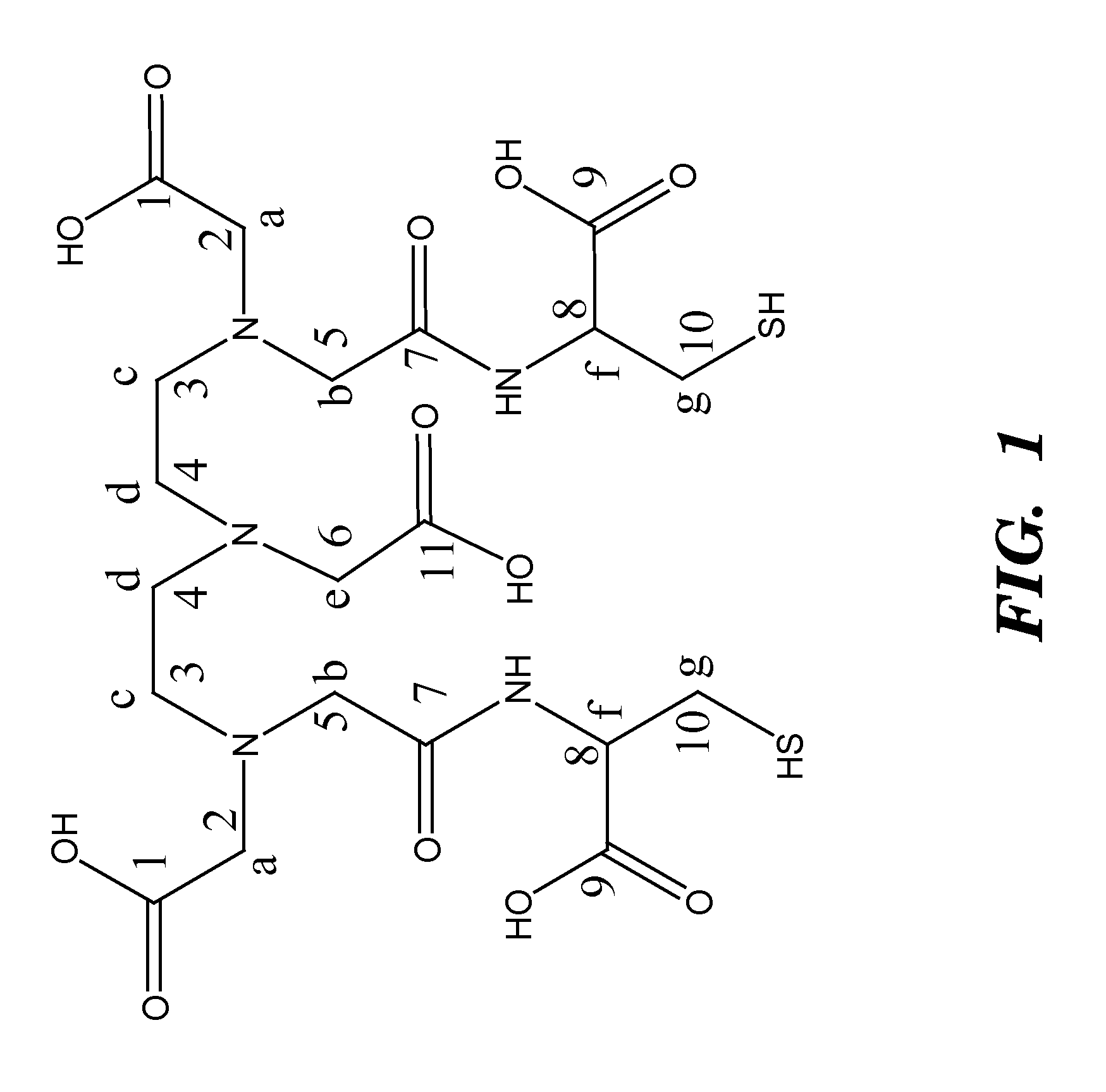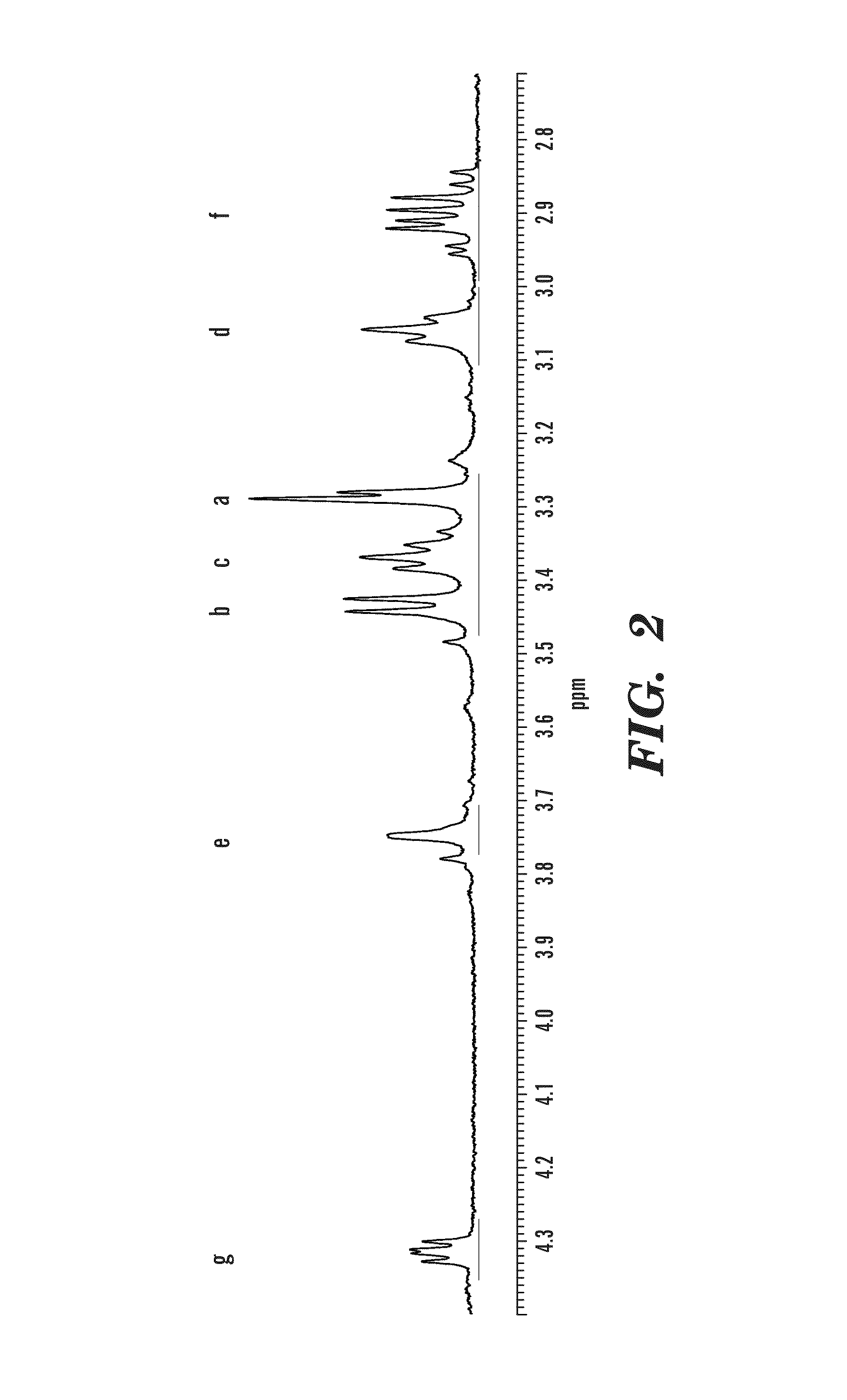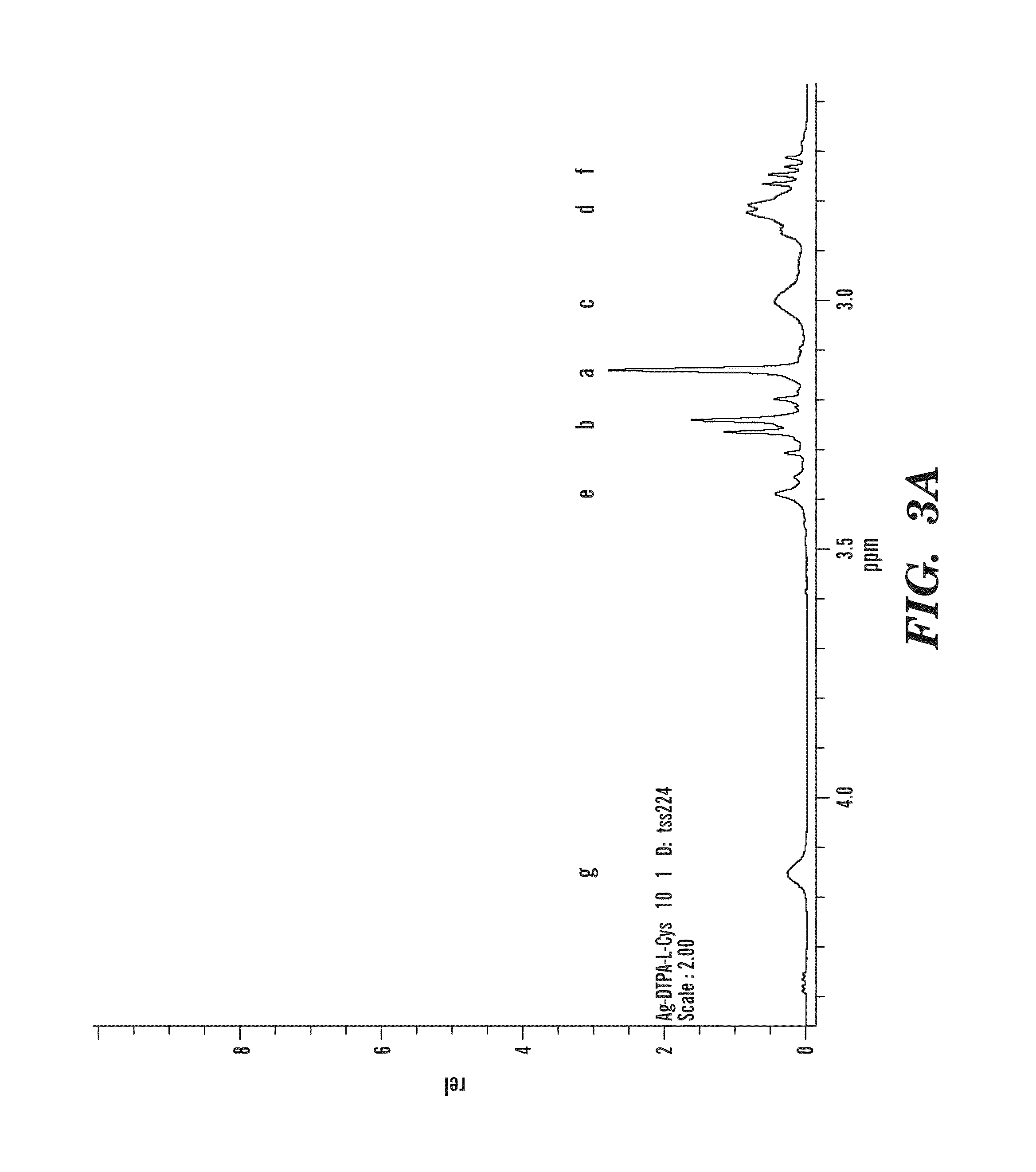Contrast agents anchored by thiols on nanoparticles
a technology of contrast agents and nanoparticles, applied in the field of contrast agents anchored by thiols on nanoparticles, can solve the problems of undesirable formation of disulfide groups, difficult control of constructs whose properties as solutes and contrast agents, and achieve the effect of preventing the formation of disulfide bonds
- Summary
- Abstract
- Description
- Claims
- Application Information
AI Technical Summary
Benefits of technology
Problems solved by technology
Method used
Image
Examples
example 1
Materials
[0051]All chemicals were used as received without further purification. 13C and 1H nuclear magnetic resonance spectroscopy were performed on a Bruker Avance 400 MHz NMR instrument. Dialyses were carried out using cellulose tubes with 1200 molecular weight cut off. Thermogravimetric analyses on dried powders of nanoparticles (10-15 mg) were carried out on a Texas Instruments SDT Q600. Profiles were acquired by using a Universal Analysis program. Electrospray data were obtained on an Agilent 1100 Series Capillary LCMSD Trap XCT instrument. Infrared data was obtained on Nicolet 750 spectrometer. TEM images were obtained on carbon coated copper grids and examined under a Philips CM-12 electron microscope. Photographs were taken by a Gatan 1 k×1 k digital camera.
example 2
Synthesis of Diethylenetriamine-1,1′,4,7,7′-pentacetic Acid (DTPA)-1,7-bis Anhydride (1)
[0052]DTPA 6.0 g (15.33 mmol) was suspended in 27 mL of 5:4 (v / v) pyridine and acetic anhydride. The solution was gradually heated to 60° C.-65° C. and stirred under inert atmosphere for 24 hr. The product was collected by filtration washed with acetonitrile followed by ether and dried under vacuum. This produced a fine yellow powder with 94% yield. See Jasanada, F., et al., Tetrahedron Lett., 33(39): 5745-5748 (1992), which is hereby incorporated by reference in its entirety.
example 3
Synthesis of DTPA-L-Cysteine (2)
[0053]L-Cysteine 1.76 g (11.19 mmol) was deprotonated in 100 ml water with equimolar amount of Na2CO3 0.59 g (5.59 mmol). To this solution, compound 1, 2.0 g (5.59 mmol) was added, and the solution was stirred at rt for 24 h. The water was removed under vacuum and methanol was added. The insoluble salts were removed from the methanol solution by filtration. The methanol was then removed under vacuum and replaced by acetone. Acetone was added to the solid to extract residual water and methanol. The product was collected by filtration and dried under vacuum leaving a yellow powder. Yield 93.3%
PUM
| Property | Measurement | Unit |
|---|---|---|
| wavelengths | aaaaa | aaaaa |
| wavelengths | aaaaa | aaaaa |
| density | aaaaa | aaaaa |
Abstract
Description
Claims
Application Information
 Login to View More
Login to View More - R&D
- Intellectual Property
- Life Sciences
- Materials
- Tech Scout
- Unparalleled Data Quality
- Higher Quality Content
- 60% Fewer Hallucinations
Browse by: Latest US Patents, China's latest patents, Technical Efficacy Thesaurus, Application Domain, Technology Topic, Popular Technical Reports.
© 2025 PatSnap. All rights reserved.Legal|Privacy policy|Modern Slavery Act Transparency Statement|Sitemap|About US| Contact US: help@patsnap.com



